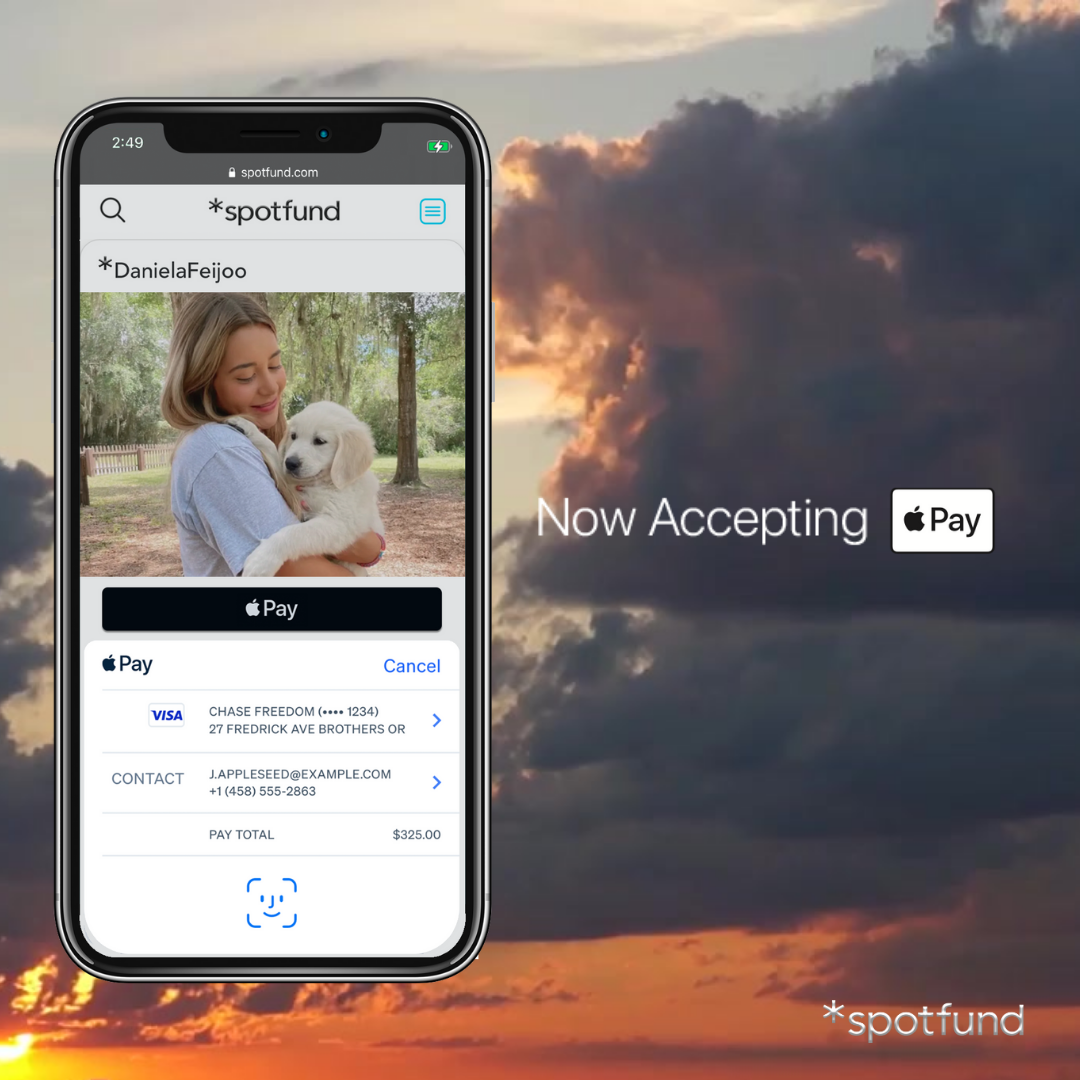A donation drive is a focused effort to gather essential resources—such as funds, food, clothing, or other necessities—to support a cause or community in need. For both individuals and nonprofits, organizing a donation drive is a powerful way to bring people together, raise awareness, and create tangible impact. If you're wondering how to start a donation drive, explore our guide which offers innovative donation drive ideas and practical tips for hosting a successful fundraising drive. Beyond merely collecting items or funds, donation drives foster community spirit by empowering supporters to contribute directly to meaningful change. Discover a range of creative charity drive ideas designed to maximize engagement and amplify your resource gathering efforts.

What is a Donation Drive (And Why Run One)?
A donation drive is an organized campaign to collect resources, funds, or essential items to support a specific cause or community. Often used by nonprofits, community groups, or even individuals, the goal of a donation drive is to gather contributions that meet the needs of those in difficult situations—whether that’s food for the hungry, supplies for students, or funds for a particular initiative. Donation drives offer a structured way for people to contribute to a cause, providing clear guidelines on what items or funds are needed and how they will make a difference.
Benefits of Donation Drives
Donation drives offer numerous benefits, not only for the recipients but also for those organizing and contributing. Some key benefits include:
-
Impact on the Community: Donation drives create a direct and positive impact, providing resources where they are most needed. Whether it’s food, clothing, or funds, the contributions from a donation drive can make a tangible difference in people’s lives.
-
Awareness-Building: Organizing a donation drive is a great way to raise awareness about a particular cause. By engaging the community in the drive, organizers can share the importance of the cause and educate others about the issues at hand.
-
Donor Engagement: For nonprofits, donation drives are an effective way to engage both new and existing donors. By participating, donors feel more directly involved, which can lead to greater long-term commitment and support.
By gathering resources and fostering involvement, donation drives are an impactful way for individuals and nonprofits alike to create positive change in their communities.

15 Best Donation Drive Ideas to Inspire You
Looking for creative and effective donation drive ideas? These 15 ideas can help you organize a successful fundraising drive for your school, nonprofit, or community. Whether you're planning a local event or launching a virtual campaign, there's a donation drive idea here for you.
School and Classroom Donation Drive Ideas
-
School Supplies Drive: Collect notebooks, pencils, calculators, and other essentials to help students prepare for the school year.
-
Book Drive: Ask for gently used or new books to donate to classrooms, shelters, or underserved libraries in your area.
-
Backpack Drive: Invite donors to fill backpacks with school or hygiene items for students in need.
Community and Neighborhood Drives
-
Food Drive: Collect nonperishable items like canned goods, pasta, and rice for local food pantries and soup kitchens.
-
Winter Coat Drive: Gather new or gently worn coats, gloves, and hats to distribute during the colder months.
-
Hygiene Kit Drive: Request personal care items such as soap, toothbrushes, deodorant, and feminine products to help those experiencing homelessness or hardship.
-
Toy Drive: Accept new toys and games to donate to children’s hospitals, shelters, or families in crisis around the holidays.
Unique or Seasonal Donation Drives
-
Disaster Relief Drive: Quickly collect emergency supplies like bottled water, first-aid kits, and blankets in response to local or global crises.
-
Pet Supply Drive: Gather pet food, toys, leashes, and bedding for animal shelters or pet foster networks.
-
Holiday Gift Bag Drive: Encourage your community to create gift bags filled with seasonal treats, essentials, or small gifts for families in need.
-
Valentine’s Card Drive: Have supporters write heartfelt cards for seniors, children in hospitals, or veterans to brighten their day.
-
Spring Cleaning Swap Drive: Collect gently used clothing, kitchenware, or electronics for redistribution or resale by local nonprofits.
Digital and Social Media-Friendly Drives
-
Amazon Wishlist Drive: Share a curated list of needed items online so supporters can ship donations directly to your organization.
-
QR Code Drop-Off Drive: Set up donation bins in public places with QR codes linking to a live list of requested items or updates.
-
Virtual Spotfund Item Pledge Drive: Use Spotfund to launch a virtual donation drive where people can pledge money toward specific items and easily share the campaign on social media.
How to Start a Donation Drive
Step 1: Set Clear Goals
To ensure a successful donation drive, start by setting clear, measurable goals that outline what you want to achieve. Goals can include a specific fundraising amount, item quantity, or target number of donors. For example, if you’re organizing a food drive, your goal might be to collect 500 cans of food by the end of the month. Or, if it’s a monetary drive, you might aim to raise $10,000 to support a local shelter.
Setting a realistic timeline is also essential. For instance, a two-week drive might work well for an online campaign, but an in-person event may require a month or longer to gather enough support. Break down your timeline with mini-deadlines for tasks like promotion, donation collection, and volunteer coordination to keep your drive organized and on track.
Step 2: Identify Your Target Audience
Knowing your target audience is crucial for maximizing engagement in your donation drive. Tailor your approach depending on whether you’re an individual or a nonprofit:
-
For Individuals: Start by considering friends, family, and local community members who share an interest in your cause. For instance, if you’re organizing a school supply drive, focus on parents, teachers, and community members who are likely to understand the need. Research online communities or social media groups that align with your cause for additional support.
-
For Nonprofits: Segment your audience based on existing donors, volunteers, and supporters who have contributed to similar causes. For example, a nonprofit organizing a winter coat drive could reach out to past donors who participated in similar events. Use insights from previous donation drives to shape your messaging, focusing on those who have already demonstrated interest in related causes. By targeting relevant demographics, you can craft a more compelling message that resonates with potential donors.
Step 3: Choose the Right Type of Drive
Selecting the right type of donation drive depends on the needs of your target audience and your mission:
-
Match the Drive to Immediate Community Needs: Assess what type of donation will create the greatest impact in your community. For example, if your local food bank is experiencing shortages, a food drive may be the most impactful option. On the other hand, if a natural disaster has recently occurred, consider organizing a monetary donation drive for flexibility in supporting emergency relief.
-
Consider Resource Availability: If you have limited storage space, a virtual monetary drive might be more practical than a physical goods collection. Nonprofits with large community networks can benefit from diverse drives, like blood or clothing, where local businesses might provide collection points.
-
Align with Your Mission: Choose a drive that fits seamlessly with your mission. If you’re a nonprofit focused on education, for example, a school supply drive aligns well with your goals and resonates with donors who already support education-based initiatives. Individuals may choose a drive type that reflects personal passions, such as organizing a pet food drive for animal shelters.
By setting clear goals, identifying the right audience, and choosing a drive that aligns with both community needs and your mission, you can create a well-structured plan that maximizes the impact and reach of your donation drive.

How to Host a Donation Drive Event
Physical vs. Virtual Donation Drives
When hosting a donation drive, you can choose between a physical or virtual format based on resources, audience, and logistics. Here’s how each option compares:
Physical Donation Drives
-
Logistics: Physical drives require planning for a designated collection location, transportation, and storage space. For example, a clothing drive may need several drop-off points, like schools or community centers, and volunteers to help sort and organize items.
-
Benefits: Physical drives allow for more face-to-face engagement and may attract people who prefer to donate tangible items. They also offer opportunities to engage with the community in real-time and may encourage more spontaneous contributions.
-
Challenges: Physical drives require significant time and manpower to organize and manage, and storage limitations may restrict the volume of donations. Accessibility and weather can also impact attendance, so it’s essential to plan accordingly.
Virtual Donation Drives
-
Logistics: Virtual drives are hosted entirely online, with platforms handling payment processing and donor management. For instance, a virtual donation drive can be set up on crowdfunding sites or social media to reach a larger audience without needing a physical space.
-
Benefits: Virtual drives expand your reach beyond local supporters, allowing donors to participate from anywhere. They also provide a quick, convenient donation process and reduce overhead costs related to storage or transportation.
-
Challenges: The online donation drive may lack the personal connection of in-person events, and some donors may be less inclined to participate without a tangible donation point. Additionally, technical setup and online promotion may require additional digital skills or assistance.
Choosing between physical and virtual formats depends on your resources, goals, and audience preferences. Many successful drives even blend both methods, with virtual donations supporting a physical event to maximize impact.
Use of Online Platforms
Technology can make running a donation drive simpler and more effective, especially for virtual formats. Here are some platforms to consider:
-
Crowdfunding Sites: Platforms like *spotfund, a popular platform for online donation, especially for peer-to-peer fundraisers. It integrates with social media, enabling supporters to easily share the drive with their networks. It also offers features like donation tracking and built-in messaging to communicate with donors.
-
Social Media: Hosting a virtual donation drive can be as simple as creating a campaign on social media platforms like Facebook or Instagram. Use tools such as donation stickers, direct payment links, and hashtags to spread awareness and encourage donations.
Using technology streamlines the donation process and allows for real-time updates, making it easier to track progress, engage with donors, and adjust your strategy if needed.
Start your *spotfund fundraising online campaign to boost your donation drive today to reach more supporters and build lasting impact!

Setting Up a Donation Collection Point
If hosting a physical donation drive, setting up accessible and safe collection points is essential:
-
Location Choice: Select high-traffic areas that are safe, convenient, and accessible for your audience. Examples include schools, places of worship, community centers, and local businesses. Locations should have enough space to accommodate donations and be easy for donors to locate.
-
Safety Measures: Ensure that each collection point follows safety guidelines, especially if the drive is ongoing or has large volumes of donations. Have staff or volunteers on-site to monitor donations, prevent overcrowding, and assist donors.
-
Visibility and Signage: Make your collection points highly visible by using clear signage that indicates your organization, the donation type, and any special instructions. For example, using large banners or posters with your campaign’s logo and details can attract more passersby and increase drop-off rates.
Careful planning of collection points can enhance convenience, encourage more donations, and ensure a smooth operation from start to finish. By thoughtfully choosing between physical and virtual options, leveraging technology, and setting up secure, accessible collection spots, your donation drive will have a greater chance of success.
Engaging and Acknowledging Donors
Incentives and Recognition
Consider offering incentives to encourage donations, like digital badges, social media shout-outs, or small thank-you gifts. Even simple recognition, such as listing donor names on a campaign webpage, can go a long way in showing appreciation and fostering a sense of involvement.
Donor Communication
Transparency is essential in maintaining trust. Update donors throughout the drive with progress reports and information on how their donations will be used. This could be as simple as weekly emails or social media posts showing items collected so far.
Post-Drive Follow-Up
Once the drive concludes, follow up by sharing results and impact stories. Thank your donors with a personalized message and let them know how their contributions have made a difference. Sharing outcomes, like total funds raised or items distributed, builds credibility and lays a foundation for future support.

Tips for Running a Sustainable Donation Drive
Create Recurrent Opportunities
Creating a sustainable donation drive often means establishing it as an annual or recurring event. A consistent, predictable drive keeps supporters engaged and builds a stronger donor base over time:
-
Annual Drives: Many nonprofits and community groups establish annual donation drives, such as holiday food or coat drives. This tradition helps build community awareness and can lead to increased participation as supporters come to expect and plan for the event each year.
-
Seasonal or Quarterly Drives: Depending on the needs of your cause, hosting a drive every season or quarter can help address ongoing needs, such as school supplies in the fall or food donations around the holidays. Let supporters know about the recurring nature of these drives and share updates throughout the year to maintain interest and engagement.
-
Leverage Milestones: Establish a yearly or seasonal goal to reach and celebrate key milestones in your drive. For example, a food bank may celebrate collecting 50,000 items each Thanksgiving season, a tradition that strengthens donor commitment by showing measurable impact.
Incorporate Volunteer Support
Volunteers play a crucial role in making a donation drive sustainable by helping manage logistics, promotion, and donor engagement:
-
Promotion Assistance: Volunteers can expand your reach by promoting the drive within their networks, both online and offline. Equip them with templates for social media posts, flyers, and email announcements to make spreading the word easy and consistent.
-
Collection and Sorting: For physical drives, volunteers can help manage collection points, sort donations, and ensure items are organized for distribution. This support is essential, particularly for larger-scale drives where managing logistics alone can become overwhelming.
-
Engaging with Donors: Volunteers can handle tasks like thanking donors in real-time at collection points, answering questions, and providing information about your cause. By having volunteers engage with supporters, you create a more personal connection, which can lead to higher donor retention in future drives.
Data Collection and Analysis
Tracking data from each drive is essential for measuring success and identifying areas for improvement, ensuring your donation drive grows stronger over time:
-
Simple Tracking Methods: For physical drives, keep a log of donations received, including item types, quantities, and donor information where possible. For virtual drives, use built-in analytics from online donation platforms or crowdfunding sites to track monetary contributions, donor demographics, and engagement levels.
-
Measure Success: Set benchmarks for each drive, such as the total number of items collected or funds raised, and track how well each drive performs. You can also measure engagement, such as the number of volunteers involved or social media shares, to see how awareness is growing over time.
-
Use Data for Future Planning: Analyze the collected data to refine future drives. For example, if one collection location consistently receives more donations than others, consider setting up additional collection points nearby. Tracking seasonal trends can also help you determine the best times of year for specific types of drives, maximizing the drive’s effectiveness and community impact.
By creating recurring opportunities, leveraging volunteer support, and collecting data to measure and refine your efforts, you can run a sustainable donation drive that continues to grow in effectiveness year after year.
Conclusion
Running a donation drive is a powerful way to rally community support, gather resources, and make a meaningful impact on causes that matter. Whether you’re collecting food, supplies, or essential medical items, a well-planned drive connects donors to their community and provides much-needed resources for those in need. By choosing the right type of drive and engaging with donors, individuals and nonprofits alike can maximize their outreach and drive success.
For those looking to boost online donations and reach a wider audience, platforms like *spotfund offer an easy way to launch and manage virtual donation drives. With seamless social media integration and tools to track and engage donors, *spotfund makes it simple to connect with supporters, increase visibility, and achieve your donation goals.
Start your online drive on *spotfund today and make your next donation drive more impactful than ever!

